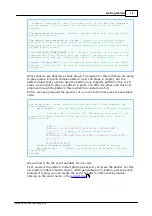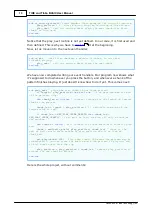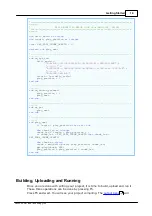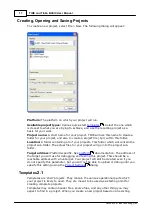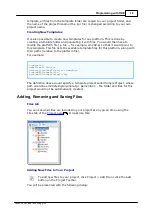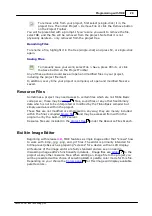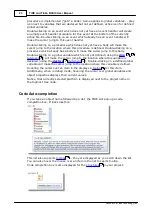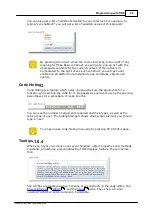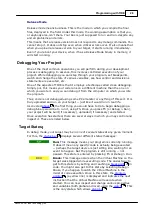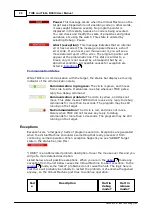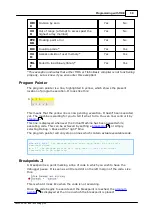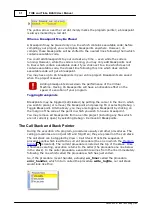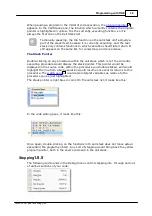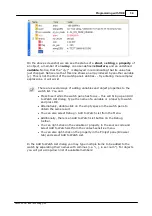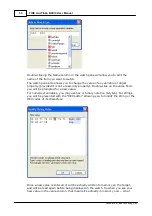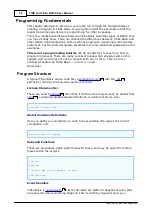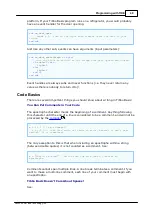
26
Programming with TIDE
©2000-2008 Tibbo Technology Inc.
definition wins (takes precedence) over the comment in the procedure declaration.
Variables also have declaration (
) and definition (
). Comment in the definition wins.
Finally, your own comment placed in the event handler definition takes over the
comment for this event that comes from the platform file.
Supported HTML Tags
Here are the tags (HTML elements) that you can use:
Presentation markup tags: <b>, <i>, <big>, <small>, <s>, <u>, <font
[color=color] [size=size] [face=face]>
Headings <h1>...<h6>
Line break <br>
Comments: <!-- -->
All other tags (elements) cannot be used. Most of these tags are simply ignored,
but some lead to scrambled text output.
One peculiarity of the HTML renderer used in the TIDE software is that
it often requires you to add an extra space before the closing tag in the
tag pair. For example, if you write "<b>Bold</b> text" then you will
get this output: "Boldtext". Writing "<b>Bold </b> text" or
<b>Bold</b>text will produce correct result: "Bold text".
Making, Uploading and Running an Executable Binary
An Executable Binary File is a file (.tpc type) which contains your project in
compiled form, along with any resource files. It is uploaded to the target, where it
is actually executed by the TiOS Virtual Machine.
Making a Binary
Once you have code which you wish to try out, you may build it by
selecting Project > Build, by pressing the shortcut key F7 or by clicking
the Build button on the Debug toolbar.
If this is not the first time you're building this project, the build process will skip
any files which were unmodified since the last time the project was built. This
optimizes build speed.
To force the build of all files, even those which were not modified since the last
time, select Project > Rebuild All.
On build, the
will display any errors. You can double-click on the
line describing an error to jump directly to the problematic line in your code.
Uploading a Binary
79
79
81
81
81
129

